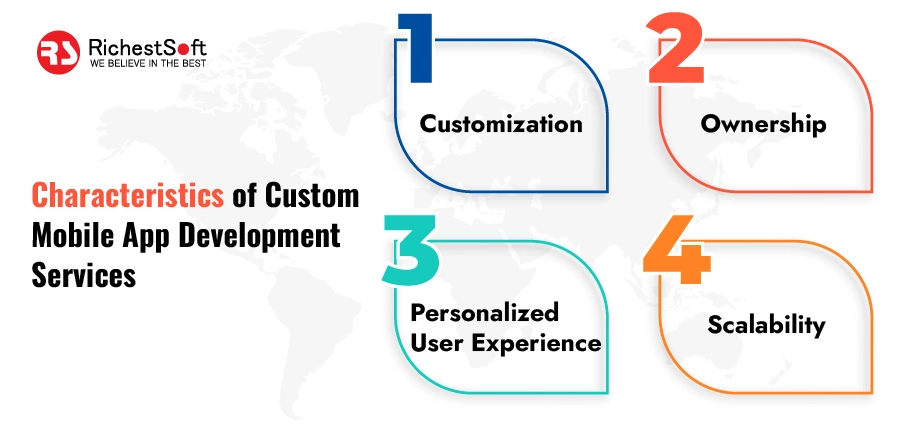With the rise in the latest technologies and new ways of doing business, nowadays no one is ready to wait in a long queue to buy just a single product. However, the traditional way of doing business is still working but every second people are using the latest ways of doing business i.e. electronic commerce (e commerce) and mobile commerce (m commerce).
Businesses of different sizes are searching for the latest way of offering customers to purchase products that will benefit from mobile commerce, which provide a range of advantages to both businesses and purchasers. Both e commerce and m commerce have become increasingly important in recent years as more and more people have gained access to the internet and mobile devices. So what is m commerce and what is the difference between e commerce and m commerce ?
What is E commerce ?
e commerce, short for electronic commerce, refers to the buying and selling of goods and services over the internet. It involves conducting business transactions electronically, often through a website or mobile application, and using electronic payment systems to exchange money. e commerce has revolutionized the way businesses operate, making it easier for both consumers and businesses to purchase and sell products and services. With e commerce, businesses can reach a wider audience and sell products globally, while consumers can shop conveniently from anywhere with an internet connection.
There are various types of e commerce, including business-to-consumer (B2C), business-to-business (B2B), consumer-to-consumer (C2C), and consumer-to-business (C2B). e commerce has also given rise to new business models, such as dropshipping, subscription services, and online marketplaces.
Pros of E commerce
There are several advantages of e commerce, including:
- Increased reach: e commerce allows businesses to reach a global audience and expand their customer base beyond their physical location. With e commerce, businesses can easily sell their products or services to customers anywhere in the world.
- Reduced costs: e commerce eliminates the need for a physical storefront, which can significantly reduce operating costs. Businesses can save money on rent, utilities, and other expenses associated with maintaining a physical store.
- Improved customer experience: e commerce provides customers with a convenient and personalized shopping experience. Customers can shop from the comfort of their own homes, and e commerce websites often offer personalized product recommendations based on their browsing history and purchase behavior.
- Increased sales: e commerce allows businesses to sell their products or services 24/7, which can result in increased sales and revenue. e commerce websites can also be optimized for search engines, making it easier for potential customers to find and purchase products.
- Better inventory management: e commerce allows businesses to easily manage their inventory levels and track sales in real-time. This can help businesses avoid overstocking or understocking products, which can result in lost sales or excess inventory costs.
Cons of E commerce
While e commerce offers numerous advantages, there are also some disadvantages that businesses should be aware of. These include:
- Security concerns: e commerce transactions require customers to enter sensitive personal and financial information, which can be susceptible to hacking and identity theft. As such, businesses must implement strong security measures to protect their customers’ information.
- Dependence on technology: e commerce relies heavily on technology, including website hosting, payment processing, and order fulfillment systems. Any technical issues or downtime can result in lost sales and damage to a business’s reputation.
- Lack of personal touch: e commerce lacks the personal touch of in-person shopping experiences. Customers may be hesitant to purchase products without seeing or touching them in person, and may require more customer service support to make informed purchasing decisions.
- Shipping and fulfillment challenges: e commerce requires businesses to handle shipping and order fulfillment, which can be challenging and expensive, particularly for small businesses. Shipping costs and delivery times can also impact customer satisfaction and loyalty.
- Intense competition: e commerce has a low barrier to entry, which has resulted in intense competition among businesses. To be successful, businesses must differentiate themselves through competitive pricing, unique products, or superior customer service.
Read About : Essential Features To Power Up Your eCommerce Website
What is M commerce ?
m commerce, short for mobile commerce, refers to the buying and selling of goods and services through wireless handheld devices such as smartphones and tablets. It involves conducting commercial transactions through mobile applications, mobile websites, and other mobile platforms.
m commerce has become increasingly popular in recent years, as the use of mobile devices has grown exponentially. With m commerce, businesses can provide their customers with a seamless and convenient mobile shopping experience, allowing them to shop from anywhere and at any time.
m commerce has also given rise to new business models, such as mobile payments, mobile wallets, and location-based marketing. It has transformed the way businesses operate, making it easier for them to reach their target audience and sell products and services directly through mobile devices.
Pros of M commerce
Some of the advantages of m commerce (mobile commerce) include:
- Increased convenience: m commerce allows customers to shop from anywhere, anytime, using their mobile devices. This convenience can increase customer satisfaction and loyalty.
- Personalization: m commerce allows businesses to gather data on their customers’ browsing and purchasing behavior, which can be used to personalize the shopping experience. Personalization can improve customer engagement and increase sales.
- Enhanced user experience: m commerce applications are designed to provide a seamless and user-friendly shopping experience, optimized for mobile devices. This can improve customer satisfaction and increase the likelihood of repeat business.
- Improved communication: m commerce allows businesses to communicate directly with their customers through push notifications, text messages, and in-app messaging. This can help businesses build stronger relationships with their customers and increase engagement.
- Faster transactions: m commerce allows customers to make purchases quickly and easily, with one-click checkout and mobile payment options. This can reduce cart abandonment rates and increase sales.
Cons of M commerce
Some of the disadvantages of m commerce (mobile commerce) include:
- Security concerns: Mobile devices are susceptible to security breaches and hacking, which can compromise sensitive customer information. Businesses must implement strong security measures to protect their customers’ data.
- Dependence on technology: m commerce relies heavily on technology, including mobile devices, networks, and mobile applications. Any technical issues or downtime can result in lost sales and damage to a business’s reputation.
- Compatibility issues: m commerce applications may not be compatible with all mobile devices or operating systems, which can limit the potential customer base.
- Limited screen size: Mobile devices have smaller screens compared to desktop or laptop computers, which can make it challenging to display complex or detailed product information.
- User behavior and attention span: Mobile users have shorter attention spans and may not have the patience to complete a lengthy checkout process. Businesses must optimize their mobile applications and checkout processes to be simple and efficient.
Key Differences Between e commerce and m commerce
E commerce and m commerce are two distinct forms of commerce that have become increasingly important for businesses as technology continues to evolve. Although there are similarities between E commerce and M commerce, there are also several key differences that businesses must consider when deciding which approach to take. Here are some of the key differences between e commerce and m commerce:
| Category | E Commerce | M Commerce |
|---|---|---|
| Device | E commerce is typically conducted on desktop or laptop computers, E commerce websites are designed for larger screens and mouse clicks. | M commerce is conducted on mobile devices, such as smartphones or tablets, it is designed to be optimized for smaller screens and touch interfaces |
| User experience | E commerce websites are typically designed to be more informative and detailed, providing users with a wealth of information about products and services. | M commerce is designed to be more streamlined and simplified, with a focus on providing users with a fast and efficient shopping experience. |
| Accessibility | E commerce websites can be accessed from any device with an internet connection, so that E commerce websites are accessible from anywhere | M commerce applications are typically downloaded onto mobile devices, so that M commerce applications are only accessible on mobile devices. |
| Security | E commerce transactions can be susceptible to hacking and identity theft | M commerce transactions are susceptible to mobile device security breaches |
| Marketing strategies | E commerce websites can be optimized for search engines | M commerce applications typically require different forms of promotion, such as social media advertising or push notifications. |
| Functionality | E commerce websites typically offer more functionality than M commerce applications, such as advanced search and filtering options, as well as the ability to browse and compare multiple products at once. | M commerce applications are typically designed for quick and easy transactions, with minimal browsing and filtering options. |
| Mobility | E commerce stands for electronic commerce, wherein shopping is done over the internet. Usually, ecommerce activities are conducted with the help of desktop computers and laptops, so users have to look for a place to do their transactions. | M commerce implies the use of mobile devices. So people can do their business transactions anywhere they go as long as they can access the internet on their smartphones and can perform transactions with just a few taps on the screen. Instead of using a plastic card to make purchases, with mobile wallets like Apple Pay and Android Pay users can pay with their smartphones, tablets, and smartwatches. |
| Location tracking | The location tracking capabilities of ecommerce are limited due to the non-portability of devices. | Mcommerce apps, though, can track and identify user locations with the help of GPS technology, Wi-Fi, and so on. As a result, mcommerce apps can provide location-specific content and personalized recommendations. |
Which is better E commerce and M commerce
There is no definitive answer to which is better between E commerce and M commerce, as it depends on the specific needs and goals of a business. Both E commerce and M commerce have their own advantages and disadvantages, and businesses should choose the approach that best aligns with their target audience and marketing strategy.
E commerce is more suited for businesses that have a larger product catalog with more detailed product information, as it is designed to provide a more informative and content-rich user experience. It is also ideal for businesses that want to reach customers across different devices and platforms.
M commerce, on the other hand, is ideal for businesses that want to provide a simple and streamlined user experience for customers who are using mobile devices. It is particularly well-suited for businesses that want to target younger audiences who use mobile devices more frequently and for longer periods of time.
Ultimately, the decision between E commerce and M commerce will depend on a variety of factors, including the size and scope of a business, the target audience, and the overall marketing strategy. Many businesses choose to use both approaches to reach customers across different platforms and devices, maximizing their reach and potential for sales.
Conclusion
E commerce and M commerce are two distinct forms of commerce that use different platforms and technologies to reach customers. While E commerce is conducted on desktop and laptop computers, M commerce is conducted on mobile devices, such as smartphones and tablets. Both E commerce and M commerce require different marketing strategies, with E commerce websites being optimized for search engines, while M commerce applications require different forms of promotion, such as social media advertising or push notification
Source link






Leave a Reply